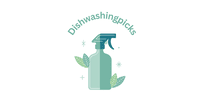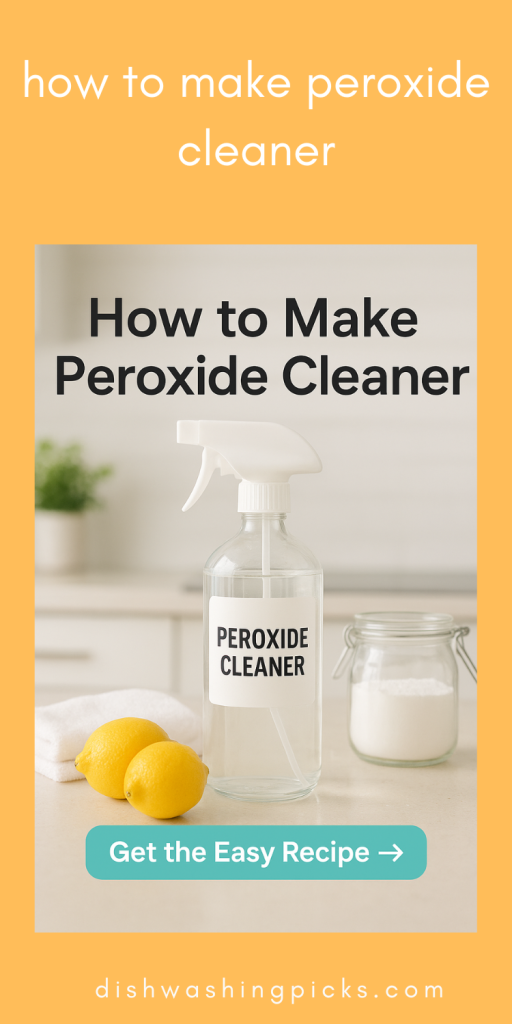Okay, be honest — how many half-empty bottles of cleaning products do you have under your sink right now? Probably… a few too many, right?
Here’s the thing: most of them do the exact same job, just with fancy labels and higher price tags.
But what if I told you that one little brown bottle from the pharmacy could replace half your cleaning stash — and it costs less than your morning coffee?
Yep, I’m talking about hydrogen peroxide.
It’s that clear, bubbly liquid your mom used to pour on scraped knees (and yes, it still stings a little). But outside the first-aid kit, hydrogen peroxide is a cleaning powerhouse. It disinfects, deodorizes, brightens, and even removes stains — all without the harsh fumes or mystery chemicals.
So if you’re the type who loves a good DIY cleaning hack or just wants to save a few bucks while keeping things shiny, you’re going to love making your own peroxide cleaner.
What Exactly Is Hydrogen Peroxide (and Why Should You Care)?
Let’s keep it simple — hydrogen peroxide (H₂O₂ if we’re feeling scientific) is basically water with an extra oxygen molecule. That extra oxygen is what gives it its magic. When it breaks down, it releases oxygen that helps lift stains, kill germs, and neutralize odors.
Think of it as nature’s own mild bleach — but without the nasty side effects.
Imagine this: you spray your homemade cleaner on a dirty countertop, and those invisible germs? Gone. Coffee stain on your white shirt? Fizzed away. Bathroom grout? Sparkling again. It’s like watching a cleaning commercial — except this time, it’s real.
Plus, hydrogen peroxide is environmentally friendly and non-toxic when diluted properly. So, no more worrying about weird chemical smells or burning your hands while scrubbing the sink.
And the best part? You can whip up your own peroxide cleaner in less than two minutes. Seriously — it’s easier than making a sandwich.
How to Make Peroxide Cleaner — Step-by-Step
Alright, imagine this: you’ve got a few basic supplies on your kitchen counter, and in under two minutes, you’re about to create an all-purpose cleaner that rivals store-bought brands — for pennies. Yep, it’s that good.
Here’s what you’ll need:
Ingredients:
- 1 cup hydrogen peroxide (3%) — the regular kind from any pharmacy
- ½ cup distilled white vinegar (optional but boosts cleaning power)
- 1 cup distilled water
- A few drops of essential oil (lemon, tea tree, or lavender work great)
- 1 spray bottle — preferably dark-colored to protect the peroxide from light
Pro tip: Hydrogen peroxide breaks down when exposed to light, so always store your cleaner in a dark or opaque bottle (brown or blue glass works best).
Step-by-Step Instructions:
- Add the liquids:
Pour the hydrogen peroxide and distilled water into your spray bottle. If you’re using vinegar, add that next — but heads up, don’t mix peroxide and vinegar in the same bottle ahead of time! (They react and lose effectiveness.) Instead, spray one after the other when cleaning. - Add the scent (and bonus cleaning power):
Toss in a few drops of your favorite essential oil. Lemon adds that “fresh and clean” smell, while tea tree oil gives it antibacterial superpowers. - Shake it up:
Gently swirl the bottle to mix everything together. Don’t go wild — just a light mix will do. - Label it:
Trust me, future-you will thank you. Write something like “DIY Peroxide Cleaner — Use on counters, sinks, and stains.”
And that’s it! You’ve officially joined the club of people who make their own eco-friendly cleaners and brag about it just a little
Smart Ways to Use Peroxide Cleaner Around the House
Let’s be honest — cleaning isn’t exactly anyone’s favorite hobby (unless you’re one of those superhumans who actually enjoys scrubbing). But when you’ve got a cleaner that’s simple, safe, and ridiculously effective? It suddenly feels a lot less like a chore and more like a secret life hack.
Here are some clever, real-world ways to use your new peroxide cleaner:
1. Countertops & Kitchen Surfaces
Spray it on your counters, let it sit for about 30 seconds, then wipe it down with a cloth.
It kills germs, removes food stains, and leaves everything smelling fresh — no chemical cloud, no stickiness.
Bonus tip: Alternate between spraying vinegar and peroxide on cutting boards for a deep clean that kills bacteria naturally. (Just don’t mix them in the same bottle!)
2. Bathroom Rescue
Your bathroom deserves some sparkle too.
Spray the peroxide cleaner on sinks, tiles, and even the toilet bowl. Let it sit for a minute, then scrub or wipe clean.
It’s amazing at tackling soap scum and that weird “mystery grime” that always shows up around faucets.
And if your shower curtain has mildew spots? Yep — spray it with peroxide cleaner, wait 10 minutes, and rinse.
3. Laundry Brightener
Forget harsh bleach! Add about half a cup of hydrogen peroxide to your white laundry load — it naturally lifts stains and keeps fabrics bright.
You can even pre-treat underarm stains or coffee spills by spraying your peroxide cleaner directly onto the fabric before tossing it in the wash.
4. Sponges, Brushes & Cutting Boards
These are some of the dirtiest items in the house, yet we often forget to clean them.
Spray or soak them with your peroxide cleaner for a few minutes to disinfect — no harsh smell, no residue.
5. Bathroom Mirrors & Glass
Surprise: hydrogen peroxide makes an incredible glass cleaner too.
Spray it on your mirrors or windows, wipe it with a microfiber cloth, and admire that streak-free shine. (It’s so satisfying, you might actually start enjoying cleaning.)
Safety Tips & Bonus Cleaning Hacks
Before you dive into spraying your homemade cleaner everywhere, a few friendly reminders — think of them as the “crafting rules” for cleaning safely and smartly.
1. Store It Right
Hydrogen peroxide breaks down when exposed to light, so always keep your spray bottle in a dark cupboard or opaque container.
Pro tip: a small brown glass bottle not only looks classy but keeps your cleaner potent for weeks.
2. Don’t Mix Chemicals in the Bottle
We mentioned it before, but it’s worth repeating: never mix vinegar and peroxide in the same bottle.
They react to form peracetic acid, which is mildly corrosive and defeats the purpose of a gentle cleaner. Spray one after the other if you want extra cleaning power.
3. Use Gloves for Sensitive Skin
Even though hydrogen peroxide is generally safe, it can dry out your hands if you’re scrubbing a lot. Wearing gloves keeps your skin happy — plus, it makes you feel like a professional chemist (lab coat optional).
4. Boost Cleaning Power Naturally
Want to kick your cleaner up a notch? Try these little hacks:
- Add baking soda for scrubbing tough stains (think grout or stovetops).
- Citrus peels in a small jar of peroxide infuse a fresh scent while keeping things antibacterial.
- Essential oils like tea tree or eucalyptus give extra germ-fighting oomph.
5. Quick Tip for Small Jobs
Keep a small spray bottle under the sink for quick touch-ups — a countertop splatter, a coffee spill, or even wiping down a doorknob. Having it ready makes cleaning less of a “project” and more of a few seconds of fun.
Bonus Hack: Multipurpose Magic
Your homemade peroxide cleaner can tackle a surprising variety of chores:
- Freshen up your fridge (spray and wipe shelves)
- Remove mildew from shower curtains
- Sanitize cutting boards and sponges
- Brighten whites in laundry without harsh chemicals
See? One simple mixture can do the job of half a dozen bottles — eco-friendly, budget-friendly, and satisfying as heck.
Conclusion: Your DIY Peroxide Cleaner Adventure
So, here we are — from a humble pharmacy bottle to an all-purpose, eco-friendly cleaning superstar. Who knew that hydrogen peroxide could be this versatile, budget-friendly, and just plain satisfying to use?
By now, you’ve got the recipe, you know the tricks, and you’ve even learned how to make the most out of every spray. Imagine your countertops sparkling, your bathroom fresh, and your whites brighter — all thanks to a simple DIY mixture you made in minutes.
Cleaning doesn’t have to feel like a chore. When you use tools that are safe, effective, and versatile, it almost becomes… fun. (Yes, I said it — fun!)

